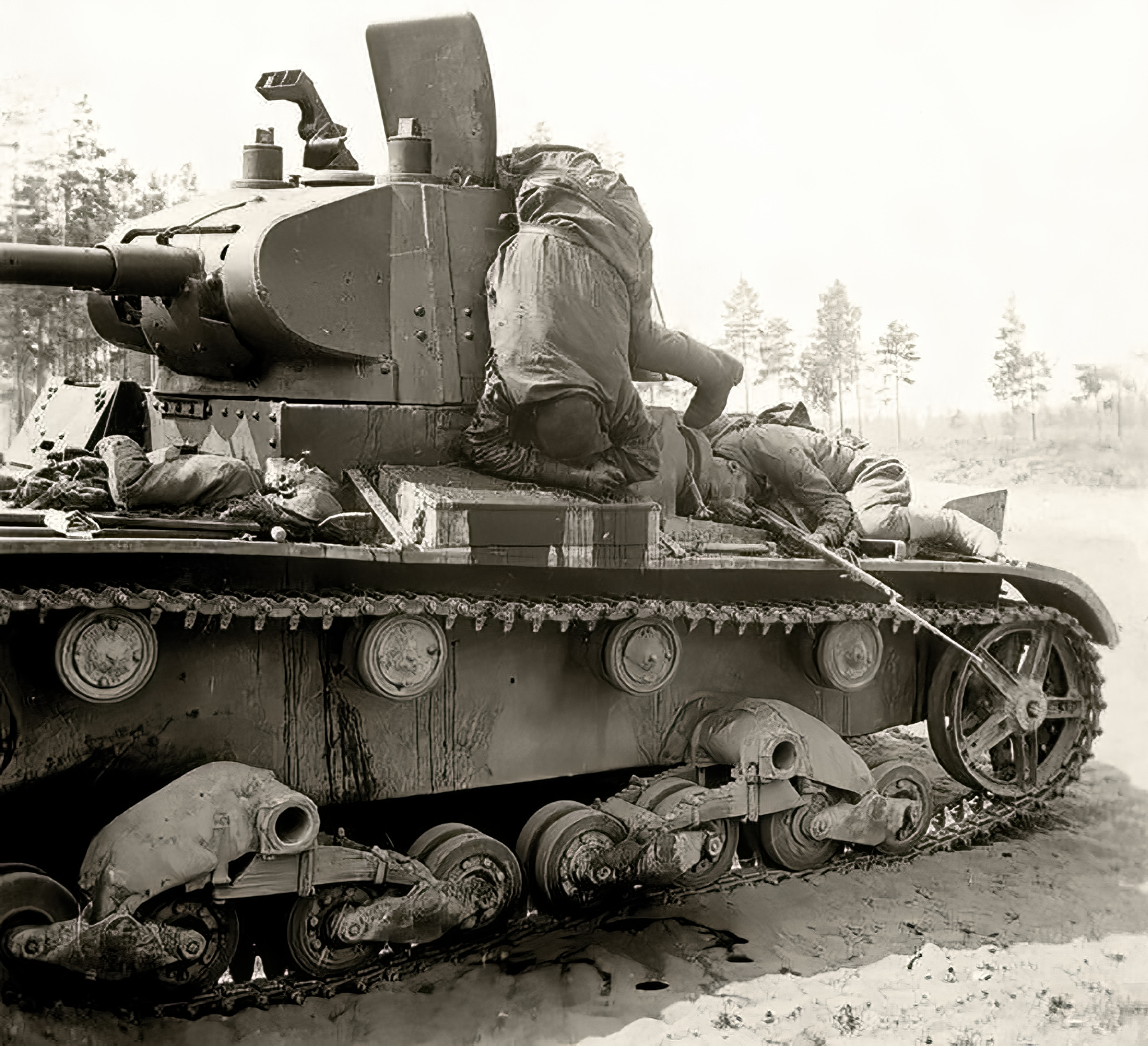
Two days before Christmas, seven months after I returned from Okinawa, I wrote a long essay recording everything I had seen and learned while I was there. According to Gene Eric Salecker’s authoritative history of tank warfare in the Pacific, “Rolling Thunder Against the Rising Sun,” the loss of 22 tanks in the assault on Kakazu Ridge on April 19 “was the greatest loss of American armor” in a single engagement “during the entire Pacific war.” If the crew decided to stay buttoned up in a disabled tank, attackers would pry open the hatch and throw in grenades. In addition to antitank guns and mines, one of the most effective methods for destroying tanks was to immobilize them with a small explosive and then run up and hit them with magnetic demolition charges or Molotov cocktails. Slowed down by steep, broken terrain and caught without infantry support, the tanks were vulnerable to various forms of attack that the Japanese exploited to near perfection. The tanks armed with flamethrowers shot long, sticky streams of rage into cave openings and whatever buildings remained. 30-caliber machine guns at anything that moved Japanese soldiers fell like tenpins as they emerged from their emplacements. Sighting through their periscopes, the gunners inside the tanks shot their. When the tanks arrived on the eastern edge of the village, they found the remnants of wooden huts surrounded by once-sturdy stone walls and hedges that had been reduced to rubble by an American bombardment. That’s where the heaviest fighting took place.” “Up there on the hill - see that blue tower with the roof?” Letscher asked. What was once a verdant, rolling landscape was now a bustling, crowded city. My grandfather likely wouldn’t have recognized Kakazu Ridge today.


This is where they were.” I felt a weight in my stomach. “This road we’re overlooking is the same one your grandfather’s company traveled to get to Kakazu. “Right here,” he said pointing to a topographic view of the land we were now standing over. When we reached the apex of the crosswalk, Letscher pulled out a ragged copy of an official military history and flipped through it until he found a map marked with a red sticky note. I had to retrace his steps and see with my own eyes the same ground he and his friends had suffered and killed for. A friend of mine, an author and a veteran, told me if I was ever going to write anything worth reading about my grandfather, I had to go to Okinawa to see the place for myself. By late afternoon, 22 tanks had been destroyed.Īfter nearly five years of archival research and reading everything I could get my hands on, I felt as if I knew all the facts but I still knew nothing. Their infantry support didn’t make it all the way up the ridge. Just after sunrise on April 19, 1945, the tanks in Company A of the 193rd Tank Battalion, along with the 1st Platoon from Company B of the 713th Armored Flamethrower Battalion attacked a village called Kakazu, perched on a fortified ridge. His tank battle happened early in the hellish three-month-long fight for Okinawa. It wasn’t until years after his death that I started doing research and piecing the story together. That’s all my grandfather ever said about it. They had set out in the morning with 30 tanks by sunset only eight had survived. He said his tank company had been nearly wiped out in a fierce battle - though it wasn’t a battle that anyone had ever heard anything about. I heard about a story my grandfather told at least once, not long after he returned from the war.

Years later, my father told me that he would have liked to have found a way to forgive his father.

My father was with him in the hospital the day before he died. My grandfather died from complications from alcoholism on the 55th anniversary of the atomic bombing of Hiroshima.


 0 kommentar(er)
0 kommentar(er)
